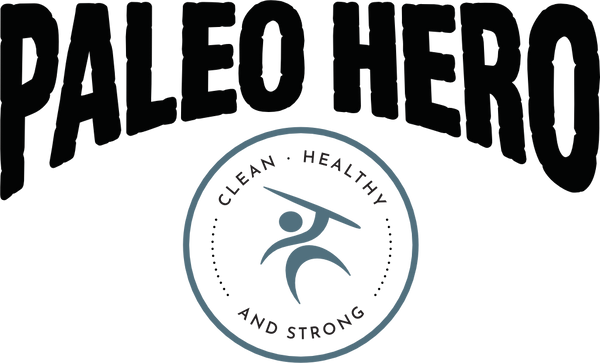If you aren't across PART 1 of this post then head back over and get up to date. If you are, carry on!
Fat Loss Order Of Priorities
Achieving a physique transformation is far more complex than the simple calories in vs. calories out. The real keys are to use your diet and exercise protocols to elevate your resting metabolic rate AND manipulate your anabolic, lipolytic hormones. Strength training has a far more powerful effect on these processes than aerobic training.
The majority of your training should be anaerobic – Resistance training/interval cardio rather than traditional aerobic cardio.
1. Without doubt the first area that needs to be addressed is nutrition. – Plain and simple no matter what your goal is you can’t out train a bad diet especially when it comes to fat loss.
2. Exercise To Get Your Metabolism Cranking.
Your exercise selection should be based on burning calories, promoting hypertrophy (muscle gain) and resting metabolic rate – RMR activation.
So the foundation of our fat loss plan is resistance (weights) training to put the muscle mass on, I know ladies I can already hear you saying I don’t want muscle mass, I want to get ‘toned’, by the way I hate the word ‘toned’! What you’re really looking to achieve is a drop in body fat and an increase in muscle – this is the only way to get ‘toned’.
What is not made clear with many articles related to fat loss is that the bulk of our calories burned is determined by our RMR. Calories utilised outside our RMR through exercise etc. is a smaller contributor to overall calories burned per day.
So how do we increase our RMR?. Simple the more muscle you have and the harder you work that muscle mass the more of an elevation in metabolic rate will be achieved. Lifting weights is the only way you are going to get a significant change in body shape.
3. Metabolic Conditioning And High Intensity Interval Training -HIIT
Anyone who’s got any knowledge in physique transformations will tell you “traditional cardio” (aerobic) is last on the priorities of fat loss list.
Remember this article is about how to achieve fat loss, I’m not taking into consideration training for performance enhancement for an athlete, to prove you can run a marathon, or because you like a particular endurance activity I’m simply stating the best ways to drop body fat plain and simple.
If you’re jogging aerobically to get rid of your love handles and improve your physique there is more effective ways to be doing it in far less time.
When most people think of training to improve endurance, they think of conditioning the cardiovascular system to improve transport of blood to the working muscles. Metabolic conditioning is the other side of the coin – conditioning the muscles to better use what’s being delivered to them by improving the efficiency of the different metabolic pathways.
When movement patterns are performed with a high level of intensity and short rest intervals between exercises, the cardiovascular and metabolic conditioning benefits exceed what can be achieved with more traditional “cardio” activities.
Metabolic training refers to conditioning exercises intended to increase the storage and delivery of energy for any activity. Generally, all out efforts of two minutes or less are anaerobic while efforts lasting more than three to several minutes are aerobic.
Training anaerobically is at an intensity that can be only sustained for short periods of time generally with all out efforts up to 2 minutes maximum at a time, in order to continue at that intensity you must rest before repeating the process. Because the intensity is so high the working duration of the session shouldn’t be any longer than generally 30minutes.
It is much easier to accumulate volume in traditional “aerobic” training simply because it requires less energy, when doing metabolic training the volume (duration) is less because it requires much more energy and is physically demanding.
High Intensity Anaerobic Interval Training
The second component to metabolic conditioning is high intensity interval training (HIIT). HIIT burns more calories overall than steady state and elevates metabolism significantly more than other forms of cardio. The positive is that you can train for less duration and get a better result, the downside is it’s bloody HARD – but when you finish a tough session that feeling you get is ‘what it really feels like to be alive’.!
Land mark study on interval training from Tremblay:
Tremblay A, Simoneau JA, Bouchard C.
Impact of exercise intensity on body fatness and skeletal muscle metabolism.
Metabolism. 1994 Jul;43(7):814-8
This study pitted 20 weeks of endurance training against 15 weeks of interval training:
Energy cost of endurance training = 28661 calories.
Energy cost of interval training = 13614 calories (less than half)
The interval training group showed a nine times greater loss in subcutaneous fat than the endurance group.
When looking at this it doesn’t make sense that the endurance group burnt more calories but loss less fat? That is of course unless you understand Exercise Post Oxygen Consumption – EPOC to explain this significant fat loss increase.
EPOC
EPOC is the recovery of metabolic rate back to pre-exercise levels, the most effective way to increase EPOC is with weight training – This is because all of what’s involved in the recovery process from strength training – cell activation/repair, tissue repair, protein synthesis, etc. require energy (calories). , next is metabolic conditioning, then HIIT and aerobic activity last.
Priorities Training List Summary & Studies
Train every muscle group hard and frequently especially our big muscle groups to create an increase in our metabolic pathways utilisation, this will leave our metabolism elevated post workout for longer than traditional endurance activity.
Below are some great studies that I got from an article written by Alwyn Cosgrove ‘The Hierarchy OF Fat Loss’
A study by Kramer, Volek et al on the ‘Influence of exercise training on physiological and performance changes with weight loss in men’.
Med. Sci. Sports Exerc., Vol. 31, No. 9, pp. 1320-1329, 1999.
Overweight subjects were assigned to three groups: diet-only, diet plus aerobics, diet plus aerobics plus weights. The diet group lost 14.6 pounds of fat in 12 weeks. The aerobic group lost only one more pound (15.6 pounds) than the diet group (training was three times a week starting at 30 minutes and progressing to 50 minutes over the 12 weeks).
The weight training group lost 21.1 pounds of fat (44% and 35% more than diet and aerobic only groups respectively). The addition of aerobic training didn’t result in any real world significant fat loss over dieting alone. Putting yourself through an extra 36 sessions of up to 50minutes at a time for 1 pound of fat loss doesn’t seem worth it especially when we are all so time poor – there is more effective ways to drop body fat.
This study shows traditional cardio is of little importance when trying to enhance your physique.
Schuenke MD, Mikat RP, McBride JM.
Effect of an acute period of resistance exercise on excess post-exercise oxygen consumption: implications for body mass management.
Eur J Appl Physiol. 2002 Mar;86(5):411-7. Epub 2002 Jan 29.
This study used a circuit training protocol of 12 sets in 31 minutes. EPOC was elevated significantly for 38 hours post-workout.
Thirty-eight hours is a pretty significant time frame for metabolism to be elevated, other studies have shown after a high intensity weights session metabolism can be elevated for 48 hours post.
Bryner RW, Ullrich IH, Sauers J, Donley D, Hornsby G, Kolar M, Yeater R.
Effects of resistance vs. aerobic training combined with an 800 calorie liquid diet on lean body mass and resting metabolic rate.
J Am Coll Nutr. 1999 Apr;18(2):115-21.
The aerobic group performed four hours of aerobics per week. The resistance training group performed 2-4 sets of 8-15 reps, 10 exercises, three times per week.
The resistance training group lost significantly more fat and didn’t lose any LBM, even at only 800 calories per day. (The reason the calories were so low was to really take any dietary variables completely out of the equation and compare the effects of the exercise regime on LBM and metabolism.)
The resistance training group actually increased metabolism compared to the aerobic group, which decreased metabolism. It seems that resistance training is a more significant stress to the body than a starvation diet.
Putting It All Together
The purpose of this article is to clarify what is going to give you your ‘biggest bang for your buck’ in the most time efficient manner to transform your physique.
Addressing diet is without doubt the most important factor for fat loss.
Training
If you’ve got time for only 3-5 sessions a week you would follow the guide lines above – your weekly routine would look something like this; 2-3 weights sessions and 2-3 metabolic sessions, or 3 weights, 1 metabolic and 1 HIIT session. This is where investing in a coach becomes important as they will design a weekly routine specific to your goals and current level.
If you’ve got time for 5 + sessions a week then I would recommend something along the lines of 3-4 weights sessions, 1-2 metabolic sessions or 1 metabolic and 2 HIIT session. Again this is a very broad guideline and depends on your specific goals investing in an experienced coach/personal trainer is something I strongly recommend if you’re serious about fat loss. If you’re paying a personal trainer that’s fat themselves fair chance they don’t have the discipline or know how to achieve a respectable body composition so don’t waste your money find one that walks the walk.
If fat loss is not happening at a rate that you’re happy with then walking not as an exercise session but simply to burn some extra calories without catabolising muscle will of course contribute to fat loss and not have a negative effect on your hormone levels and recovery processes from your intense metabolic and resistance training sessions. This is the type of exercise we were meant to do not ½ marathons and marathons.
You’ll have a hard time convincing me that moving more won’t contribute to fat loss, any chance you get to move is a chance to burn more calories. Always be conscious to include incidental activity in your daily routine.
You don’t have to flog yourself every session; the beauty is the harder you train doing the right training means the less you have to train. If you’ve got more time to exercise for sure do some low intensity aerobic sessions but make sure you’ve done your weights and metabolic sessions first.
Be aware that aerobic/Endurance sessions (I don’t mean walking here or going for a moderate bike ride) elevates cortisol levels, so does resistance training the difference is when we lift weights we get a growth hormone and testosterone response which offsets the effects of cortisol and leads to lean muscle gain.
Long frequent endurance sessions leads to excessively high cortisol levels. High cortisol levels can force the body to break down its own muscle tissue, convert it to glucose (gluconeogenesis), and use it for fuel. If you’ve got increased fat accumulation around the midsection fair chance your cortisol levels are too high. This can be addressed through diet certain supplements and correct training protocols to get your body fat levels down.
Written by Darren Bain
Founder of Function Well

